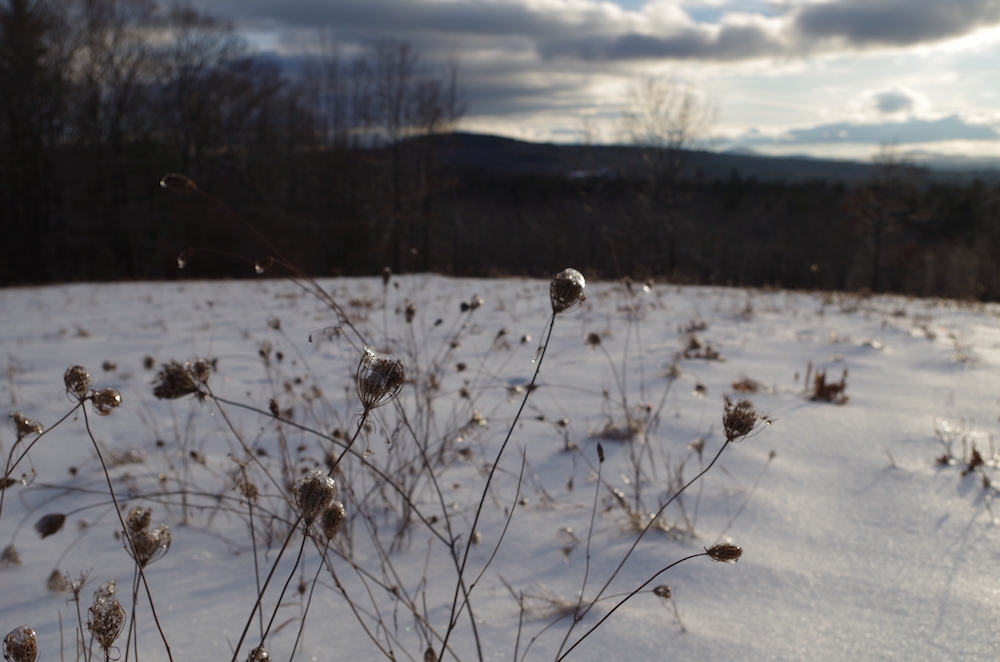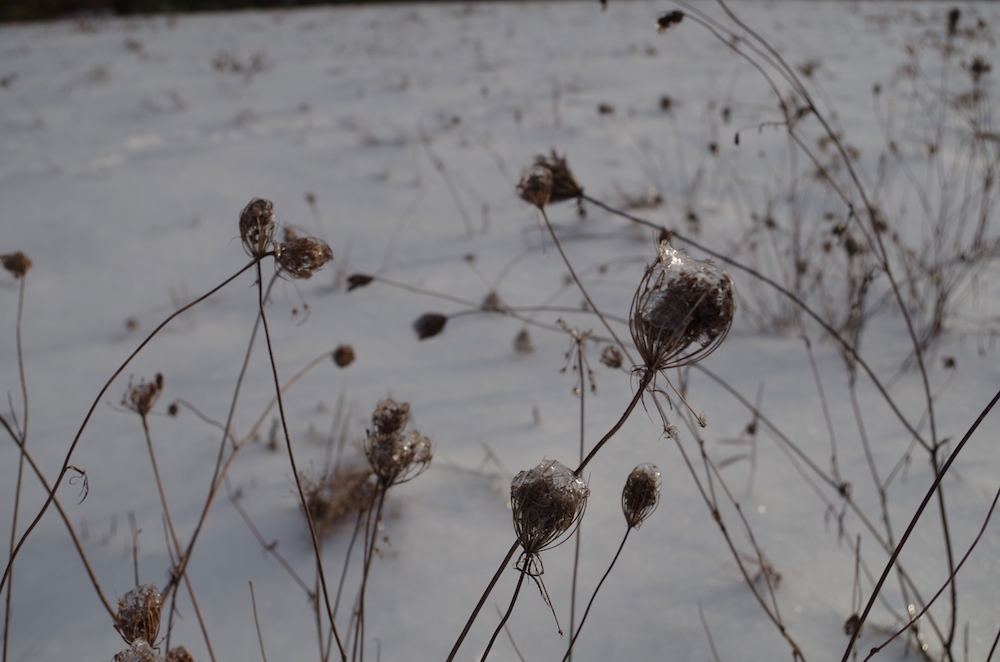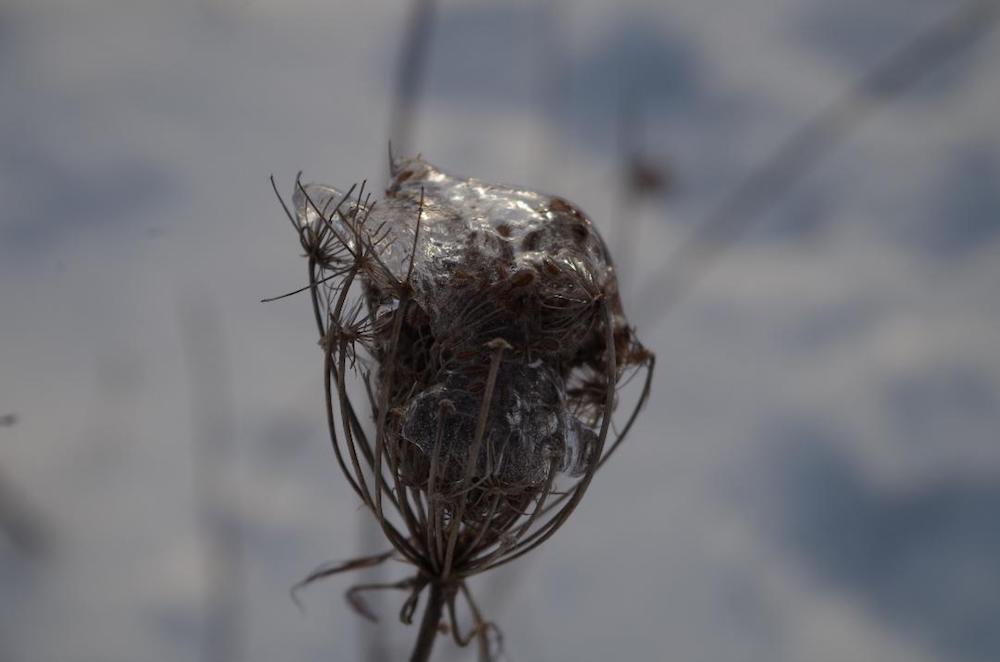On Christmas Eve my family went sledding on a snow, icy hill in New Hampshire. My sister Denise captured these beautiful images of Queen Anne’s Lace encased in ice after an ice storm.
You can see the seed heads at the tops of the plant stalks, still standing despite the weather. Here are a couple close-ups:
Queen Anne’s Lace is a beautiful plant in any season, at any phase of growth, but the ice adds a glistening sparkle! Below you can see the seeds pretty clearly. They are oval shaped with little hairs all over them. You can also see the remains of the structure of the umbel from when it was flowering.
I have been meaning to do a post about identifying dyeplants at different times of year. Knowing where plants are going to come up in the following season is very helpful. You can watch for their emergence and check back at favorite spots to see when they’re ready to harvest. I think it’s fun and exciting to understand what plants look like at different phases in their lifecycle.
Until I get around to writing that post, I recommend two books. My favorite guide on this topic is Weeds of the Northeast by Richard Uva, Joseph Neal and Joseph DiTomaso. It has incredibly detailed photos and descriptions, different kinds of keys, a glossary, illustrations of botanical terms, comparison charts of look-alike plants, and more. The other is Weeds and Wildflowers in Winter by Lauren Brown. It has expressive black and white line drawings and poetic descriptions.
As I write this now in early August, the Queen Anne’s Lace is in full bloom and setting seed.




